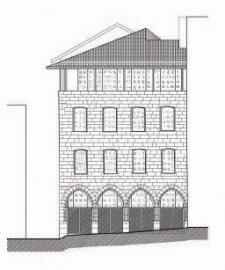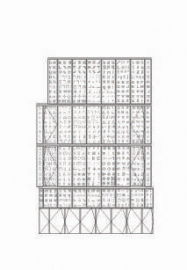Champollion Museum
The museum is housed in three buildings in the heritage area of the old town and articulates three themes: signify the activities of writing and deciphering texts in urban space, take part in public space, extend the history of these places.
The screen façade on place Champollion enables identification of the museum: it is a metaphor of writing and deciphering. The old stone façade ensures continuity with the urban fabric and houses of Figeac. The screen façade is set back from the alignment and designed as a composition in glass and copper animated by alphabets. This is the polyglot typographic moucharabieh.
Between these two façades are loggias open to the public, and high up, the soleilo, a feature borrowed from the vernacular architecture of the Figeac region. The depth of the façade forms a public transition space between square and museum.
The façade reflects a blend of artisan and industrial processes.
It expresses poetic modernity inspired by living vibrating light - light that breathes and measures time. It transposes the imaginary worlds of deciphering texts and beautiful letters, imparting identity to the museum and giving it a face.
Luminous and mysterious by day, at night it is part of the lights of the town.
The façade is composed of a sheet of copper laid over a polymer film. Layered glass carries the copper sheet and film between two separating sheets of PVB.
Graphic artist Pierre Di Sciullo designed the overall composition of this façade; he etched each letter so that it appears in positive on the copper sheet.
The world famous egyptologist Jean-François Champollion (1790-1832) was born in Figeac; he is the tutelary figure of this museum.
From the origins of writing to the new territories of telematic networks, the museographic itinerary proposes several modes of entrance: graphics (the design and creation of signs, their evolution, the role of the support, handwriting, composition) ; systems and grammars (the construction of words and sentences, the relationship to language, phonetics); and usages (functions and power of writing, civilizations and society).

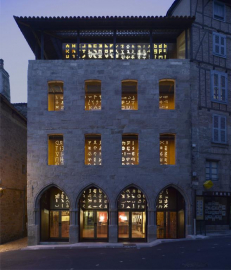
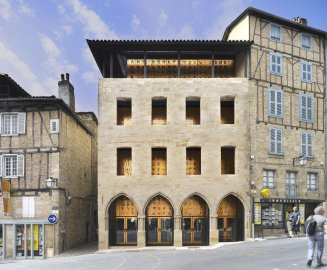
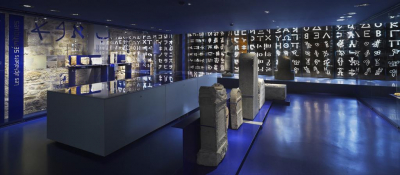
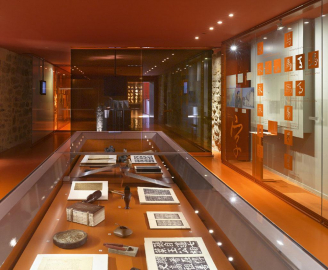
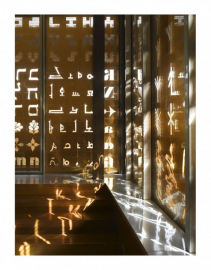
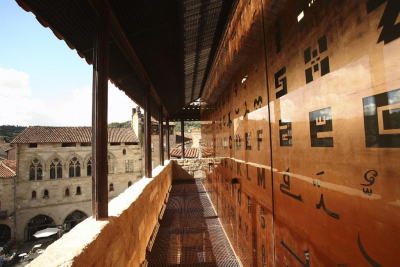
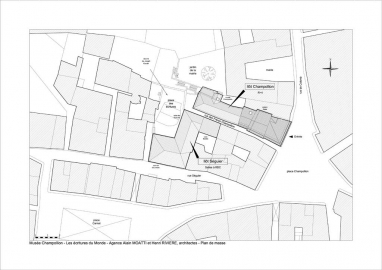
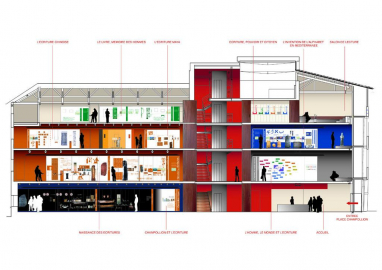
 copy.jpg)
 copy.jpg)
